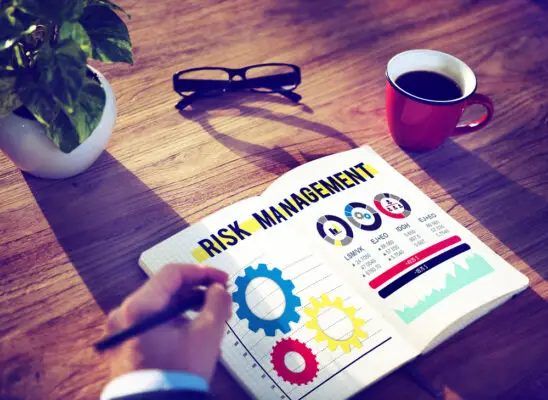Risk culture refers to the system of values and behaviours in an organization that shape the risk decisions of management and employees. It’s part of the overall corporate culture and is influenced by many factors, including the organization’s structure, strategy, operational environment, and the behaviour of its leaders.
Effective risk culture is one where everyone within the organization, from top executives to employees at every level, clearly understands the company’s approach to risk and is committed to managing risk effectively.
Key elements of a strong risk culture include:
Risk Awareness: All employees should understand the risks of their activities and decisions. This includes the risks they face directly and those that their actions might pose to the organization.
Open Communication: There should be open lines of communication about risk throughout the organization. Employees should feel comfortable raising concerns about potential risks and there should be clear channels for them to do so.
Accountability: Individuals and teams should take responsibility for the risks associated with their activities. This includes taking steps to manage these risks and being held accountable if things go wrong.
Informed Decision-Making: Decisions at all levels should consider the associated risks. This requires effective risk assessment and management processes and a commitment to using these in decision-making.
Leadership: Leaders play a crucial role in establishing and promoting the organization’s risk culture. They set the tone for how risk is viewed and managed within the organization, and their actions should reflect this.
Risk culture holistically refers to an organisation’s collective approach to managing risks, making decisions, and promoting open discussion.
A positive risk culture involves officials understanding the risks involved in their operations, making appropriate risk-based decisions, encouraging staff to express their concerns openly, and maintaining processes to elevate concerns.
This article explores what constitutes a positive risk culture by examining its factors and behaviours. We also discuss how organizations can measure and develop a positive risk culture through implementing change programs.
Furthermore, we highlight the benefits of fostering a positive organisational risk culture, such as better decision-making processes, improved risk management practices, and increased stakeholder confidence.

Overview
Organizational culture plays an important role in shaping the approach to managing risk within an organization. Factors influencing positive risk culture include explicit messages in policies and procedures, incentives, symbols and actions of senior managers/officials, business strategy, risk appetite statement, internal policies and education/training.
Desirable risk behaviours include proactive identification and assessment of risks, effective communication, and timely implementation of risk management strategies.
A risk culture survey is a key tool for understanding current attitudes towards risk within an organization. This survey can measure current status and identify root causes of undesirable attitudes and behaviours.
In developing such a survey, it is important to consider factors such as role models; consistent and useful messages about risks; reward programs that incentivize good behaviour; clear accountability for risks; appropriate skills for managing risks.
Also, consider comfort in discussing risks and the time required to complete various risk management aspects.
Factors and Behaviors
A positive risk culture is characterized by officials who understand risks, make appropriate risk-based decisions, support open discussion, encourage staff to express concerns, and maintain processes to elevate concerns.
To achieve a positive risk culture, organizations must consider various factors such as organizational culture, role models, explicit messages in policies and procedures, incentives, symbols and actions of senior officials, business strategy, risk appetite statement, internal policies, education and training.
To promote desirable behaviour towards risks among officials in an organization to achieve positive risk culture, proactive identification and assessment of risks must be encouraged.
Effective communication of identified risks helps keep everyone aware of potential dangers. In contrast, timely implementation of effective risk management strategies ensures the organization is better equipped to manage potential issues.
Detrimental behaviours towards managing risks, such as ignoring or downplaying them, must be discouraged.
Measurable attributes can help measure current status and identify root causes of undesirable attitudes and behaviours towards managing risks. Surveys can be used for this purpose by considering factors such as role models within the organization who set good examples for others to follow.
They must also consistently communicate useful information about managing potential threats. Also, effectively engage in discussions about different types of risks they face daily, and reward those who take steps to mitigate their impact on the organization’s operations.
They also need to provide adequate resources for proper training so that employees have the necessary skills to manage different types of hazards effectively.
Measuring Risk Culture
A key aspect of this measurement involves implementing a survey that takes into account various factors such as:
- Role models.
- Consistent and valuable risk-related messages.
- Comfort discussing risks.
- Reward and recognition programs.Reward systems for reporting risky behaviour or identifying potential hazards early on in projects
- Effective management of risks, including adequate skills training.
- Clear accountability for risks with defined roles/responsibilities around managing different types of potential threats (e.g., financial fraud).
- Appropriate skills to manage risks.
- Time required to complete risk management processes.
This survey aims to identify the current status of the organization’s risk culture and highlight any areas with undesirable attitudes or behaviours.
The measurable attributes of positive risk culture can be identified through the use of a well-designed risk culture survey.
This tool can provide insights into whether officials understand risks, support open discussion, and encourage staff to express concerns. Additionally, it can help identify gaps in desirable behaviours such as:
- Proactive identification and assessment of risks.
- Effective communication regarding them.
- Timely implementation of risk management strategies.
Conducting a thorough analysis using a risk culture survey, organizations can obtain valuable information that helps them develop an action plan for implementing a positive approach towards managing risks.

Implementing Change
Implementing a change program to improve an organization’s approach towards managing potential hazards involves identifying gaps in current and desired attitudes and behaviours.
Also, developing a comprehensive action plan, monitoring progress, and prioritizing communication, education, and training. This process requires the commitment of senior officials who must provide resources, support effective risk management practices, and lead by example.
Developing a positive risk culture also implies that individuals understand their role in managing risks effectively. The first step towards implementing positive change is identifying areas where improvements are necessary.
A survey can measure the current status of an organization’s risk culture. This tool helps organizations identify root causes for undesirable attitudes and behaviours affecting risk management.
Once these issues have been identified, a comprehensive action plan can be developed with specific goals to guide the change process.
Monitoring progress is critical for ensuring that changes are implemented successfully. It helps organizations stay on track towards achieving their goals while providing opportunities for adjustment if necessary.
Communication and education are vital in this process as they help keep stakeholders informed about the progress made towards improving risk management practices.
Implementing changes to develop a positive risk culture requires diligent planning and execution by all members of an organization.
Still, it has significant benefits, such as better decision-making processes, improved risk management strategies, and increased stakeholder confidence.
Benefits and Relationship
Officials who understand risks and make appropriate risk-based decisions can improve decision-making processes, resulting in better outcomes for the organization.
In addition, cultivating a positive risk culture encourages staff to express their concerns and ideas openly, leading to enhanced risk management strategies that address potential hazards proactively.
A positive risk culture also increases stakeholder confidence in the organization’s ability to manage risks effectively when officials demonstrate a commitment to managing risks and maintaining open communication channels with stakeholders.
It fosters trust and transparency. This, in turn, can help reduce reputational damage caused by incidents or crises related to poor risk management.
It is important to note that risk culture is a subset of organizational culture. A positive approach towards managing potential hazards must be embedded within the broader organizational culture to be effective.
Therefore, organizations need to promote a culture that values proactive identification and assessment of risks while ensuring effective communication channels are established among officials at all levels of the organization.
Frequently Asked Questions
What are some common challenges organizations face when developing a positive risk culture?
Developing a positive risk culture in an organization can be challenging due to various factors.
One of the common challenges is the lack of role models who embody the desired risk behaviours.
Additionally, inconsistent or ineffective risk-related messages in policies and procedures can hinder progress towards a positive risk culture.
Comfort discussing risks may also be difficult to achieve if staff members fear repercussions for raising concerns.
The absence of reward and recognition programs for sound risk management practices may further discourage proactive identification and assessment of risks.
Finally, ensuring that there are appropriate skills to manage risks and providing enough time for managing risks can pose significant challenges as well.
Overcoming these obstacles requires a systematic approach that involves identifying gaps between current and target culture states, developing an action plan, monitoring progress, communicating effectively, providing education and training opportunities, and rewarding good behaviours.
How can organizations ensure that their risk culture survey accurately captures the attitudes and behaviours of all employees?
First, they must ensure that role models demonstrate positive risk behaviours and explicitly communicate the importance of managing risks.
Additionally, messages related to risk management should be consistent and useful for all employees.
Organizations must also create a comfortable environment for discussing risks, implement reward and recognition programs for effective risk management, establish clear accountability for managing risks, provide appropriate skills training, and allow sufficient time to complete the risk management process.
What role do senior leaders play in shaping an organization’s risk culture, and how can they effectively communicate the importance of risk management to all employees?
Senior leaders are crucial in shaping an organization’s risk culture and setting the tone for identifying, assessing, and managing risks.
They can effectively communicate the importance of risk management to all employees by modelling desirable behaviours, providing explicit messages in policies and procedures, offering incentives for proactive risk identification and assessment, and consistently reinforcing the value of open discussion around potential risks.
Senior leaders must also ensure clear accountability for risks, appropriate skills to manage them are present throughout the organization, and sufficient time is dedicated to completing effective risk management processes.
Senior leader commitment to creating a positive risk culture can lead to better decision-making, improved risk management practices, and increased stakeholder confidence.
Are any industries or sectors particularly prone to negative risk cultures, and if so, why?
Certain industries or sectors may be more prone to negative risk cultures than others due to various factors such as the complexity of operations, high levels of regulation, and the potential for catastrophic consequences.
For example, in the healthcare industry,, where patient safety is paramount, a culture that downplays risks and fails to communicate effectively can result in serious harm.
Similarly, where decisions can have a significant economic impact in the financial sector, a lack of transparency and accountability may lead to unethical behaviour.
However, it is important to note that risk culture is shaped by organizational culture and individual attitudes towards risk management regardless of industry or sector.
How can organizations balance the need for a positive risk culture with other competing priorities, such as financial performance or meeting regulatory requirements?
Balancing the need for a positive risk culture with other competing priorities, such as financial performance or meeting regulatory requirements, can be challenging for organizations.
However, having a positive risk culture can lead to better decision-making, improved risk management, and increased stakeholder confidence.
To achieve this balance, organizations must prioritize the development of a positive risk culture and integrate it into their overall organizational culture.
This involves identifying gaps between current and target culture states through surveys and developing an action plan that includes key communication, education, and training components.
It is important to recognize that having a positive risk culture does not mean ignoring financial performance or regulatory requirements but rather finding ways to manage risks while still achieving these goals.

Conclusion
Positive risk culture is crucial for organizations to manage risks effectively and make informed decisions. Factors influencing a positive risk culture include leadership, communication, accountability, and continuous improvement.
Desirable risk behaviours include being proactive, transparent, and responsive to emerging risks, while detrimental behaviours involve ignoring or downplaying risks.
Organizations can measure their risk culture through surveys, interviews, and assessments to identify areas of improvement.
Implementing a risk culture change program involves establishing clear objectives and goals, engaging stakeholders at all levels of the organization, providing training and resources, monitoring progress regularly, and recognizing achievements.
A positive risk culture brings numerous benefits, such as increased stakeholder confidence and better decision-making processes based on data-driven insights rather than assumptions or biases.
Moreover, creating an environment where staff feel comfortable raising concerns helps prevent incidents from occurring in the first place.

Chris Ekai is a Risk Management expert with over 10 years of experience in the field. He has a Master’s(MSc) degree in Risk Management from University of Portsmouth and is a CPA and Finance professional. He currently works as a Content Manager at Risk Publishing, writing about Enterprise Risk Management, Business Continuity Management and Project Management.

